Journal Description
International Journal of Molecular Sciences
International Journal of Molecular Sciences
is an international, peer-reviewed, open access journal providing an advanced forum for biochemistry, molecular and cell biology, molecular biophysics, molecular medicine, and all aspects of molecular research in chemistry, and is published semimonthly online by MDPI. The Australian Society of Plant Scientists (ASPS), Epigenetics Society, European Chitin Society (EUCHIS), Spanish Society for Cell Biology (SEBC) and others are affiliated with IJMS and their members receive a discount on the article processing charges.
- Open Access— free for readers, with article processing charges (APC) paid by authors or their institutions.
- High Visibility: indexed within Scopus, SCIE (Web of Science), PubMed, PMC, MEDLINE, Embase, CAPlus / SciFinder, and other databases.
- Journal Rank: JCR - Q1 (Biochemistry and Molecular Biology) / CiteScore - Q1 (Organic Chemistry)
- Rapid Publication: manuscripts are peer-reviewed and a first decision is provided to authors approximately 16.8 days after submission; acceptance to publication is undertaken in 2.6 days (median values for papers published in this journal in the second half of 2024).
- Recognition of Reviewers: reviewers who provide timely, thorough peer-review reports receive vouchers entitling them to a discount on the APC of their next publication in any MDPI journal, in appreciation of the work done.
- Testimonials: See what our editors and authors say about the IJMS.
- Companion journals for IJMS include: Biophysica, Stresses, Lymphatics and SynBio.
Impact Factor:
4.9 (2023);
5-Year Impact Factor:
5.6 (2023)
Latest Articles
Oxidative Stress in Neurodegenerative Disorders: A Key Driver in Impairing Skeletal Muscle Health
Int. J. Mol. Sci. 2025, 26(12), 5782; https://doi.org/10.3390/ijms26125782 - 16 Jun 2025
Abstract
The fine regulation of antioxidant systems and intracellular production of reactive oxygen species (ROS) is responsible for cellular redox balance. The main organelles responsible for ROS production are mitochondria, and they complete this process through the electron transport chain. These potentially harmful molecules
[...] Read more.
The fine regulation of antioxidant systems and intracellular production of reactive oxygen species (ROS) is responsible for cellular redox balance. The main organelles responsible for ROS production are mitochondria, and they complete this process through the electron transport chain. These potentially harmful molecules are buffered by enzymatic and non-enzymatic antioxidant systems. Oxidative stress is determined by an imbalance between the production and clearance of ROS in favor of the accumulation of these detrimental species, which generate cellular damage by interacting with macromolecules. In neurodegenerative diseases, oxidative stress has been demonstrated to be a crucial component, both causal and consequential to the disease itself. On the other hand, neurodegeneration disrupts neuromuscular junctions, leading to reduced muscle use and subsequent atrophy. Additionally, systemic inflammation and metabolic dysfunction associated with neurodegenerative diseases exacerbate muscle degeneration. Thus, sarcopenia and atrophy are common consequences of neurodegeneration and play a significant role in these disorders. Regarding this, ROS have been defined as promoting sarcopenia, stimulating the expression of genes typical of this condition. Overall, this review aims to contribute to filling the gap in the literature regarding the consequences at the muscular level of the relationship between oxidative stress and neurodegenerative diseases.
Full article
(This article belongs to the Special Issue Redox Homeostasis and Oxidative Stress in Human Metabolism and Disease:2nd Edition)
Open AccessArticle
Maternal Vascular Adaptation in High-Risk Pregnancies: Effects of Early Smoking Cessation on Hemodynamic and Endothelial Function
by
Kaltrina Kutllovci Hasani, Mila Cervar-Zivkovic, Ursula Hiden, Adam Saloň, Manurishi Nanda, Bianca Steuber, Katharina Eberhard, Patrick De Boever, Christina Stern, Karoline Mayer-Pickel and Nandu Goswami
Int. J. Mol. Sci. 2025, 26(12), 5781; https://doi.org/10.3390/ijms26125781 - 16 Jun 2025
Abstract
Cardiovascular adaptation is vital for a healthy pregnancy but may be impaired in women at high risk for preeclampsia (PE), a condition marked by endothelial dysfunction. Smoking may lower the PE risk but harms vessels, and the effects of early cessation remain unclear.
[...] Read more.
Cardiovascular adaptation is vital for a healthy pregnancy but may be impaired in women at high risk for preeclampsia (PE), a condition marked by endothelial dysfunction. Smoking may lower the PE risk but harms vessels, and the effects of early cessation remain unclear. This prospective cohort study assessed vascular changes in high-risk pregnancies and the potential influence of early smoking cessation. Of 110 women screened for PE in the first trimester, 43 were classified as high-risk: 18 former smokers and 25 lifelong non-smokers. Vascular assessments were performed at 11–16, 24–28, and 34–37 weeks of gestation. Parameters included the carotid–femoral pulse wave velocity (cfPWV), asymmetric dimethylarginine (ADMA), mean arterial pressure (MAP), systolic and diastolic blood pressure (SBP, DBP), heart rate (HR), and retinal vessel calibers (central retinal arteriolar and venular equivalents (CRAE, CRVE)). Serum cotinine confirmed abstinence in former smokers. Across gestation, ADMA (p = 0.034), MAP (p = 0.001), SBP (p = 0.033), DBP (p = 0.004), and HR (p = 0.004) increased, while CRAE (p = 0.016) and CRVE (p = 0.004) narrowed in late pregnancy; cfPWV remained stable (p = 0.783). Non-smokers showed increases in their ADMA (p = 0.020), MAP (p = 0.001), and DBP (p = 0.0001) with no differences between groups. High-risk pregnancies showed vascular changes with similar profiles in former and non-smokers, underscoring the need for broader studies.
Full article
(This article belongs to the Special Issue Molecular Research on Type 1 Diabetes and Its Complications: 2nd Edition)
Open AccessArticle
Overexpression of BnaXTH22 Improving Resistance to Aluminum Toxicity in Rapeseed (Brassica napus L.)
by
Paolan Yu, Depeng Han, Ming Chen, Lei Yang, Yazhen Li, Tianbao Huang, Wen Xiong, Yewei Cheng, Xiaosan Liu, Changyan Wan, Wei Zheng and Xiaojun Xiao
Int. J. Mol. Sci. 2025, 26(12), 5780; https://doi.org/10.3390/ijms26125780 - 16 Jun 2025
Abstract
The cell wall, acting as the first line of defense against aluminum (Al) toxicity, is the primary cellular structure that encounters and perceives Al3+. Xyloglucan endotransglucosylase/hydrolase (XTH) plays a pivotal role in mediating cell wall remodeling, a critical mechanism for Al
[...] Read more.
The cell wall, acting as the first line of defense against aluminum (Al) toxicity, is the primary cellular structure that encounters and perceives Al3+. Xyloglucan endotransglucosylase/hydrolase (XTH) plays a pivotal role in mediating cell wall remodeling, a critical mechanism for Al toxicity tolerance. In our previous studies, the candidate gene BnaXTH22 was identified through GWAS and RNA-seq analyses. Under Al toxicity stress, overexpression lines (OEs) exhibited a significant increase in the relative elongation of taproots (9.44–13.32%) and total root length (8.15–12.89%) compared to the wild type (WT). Following Al treatment, OEs displayed reduced MDA content and lower relative electrical conductivity, alongside a significantly higher root activity than WT. Transcriptomic analysis revealed that differentially expressed genes in OE under Al toxicity were predominantly enriched in stress-related biological processes, including phenylpropanoid metabolism, fatty acid biosynthesis, and lignin biosynthesis. These results suggest that BnaXTH22 overexpression could enhance Al toxicity tolerance in rapeseed, potentially by modulating cell wall synthesis to bolster plant resistance.
Full article
(This article belongs to the Special Issue Rapeseed: Genetic Breeding, Key Trait Mining and Genome)
►▼
Show Figures
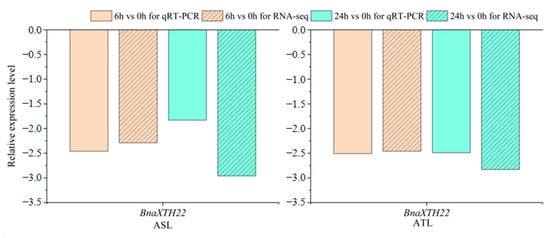
Figure 1
Open AccessArticle
Resveratrol Mitigates Inflammation by Modulating Tumor Necrosis Factor-Alpha Receptors (TNFRs) in a 2,4,6-Trinitrobenzene Sulfonic Acid (TNBS)-Induced Rat Model of Colitis
by
Médea Veszelka, József Hegyközi, Nikoletta Almási, Szilvia Török, Bence Pál Barta, Izabella Nagy, Denise Börzsei, Nikolett Bódi, Mária Bagyánszki, Renáta Szabó and Csaba Varga
Int. J. Mol. Sci. 2025, 26(12), 5779; https://doi.org/10.3390/ijms26125779 - 16 Jun 2025
Abstract
Several substances with antioxidant and anti-inflammatory properties are currently being investigated as potential adjunctive or standalone treatments for inflammatory bowel disease (IBD). One such substance is resveratrol (RES), also known as 3,5,4′-trihydroxy-trans-stilbene, a natural dietary polyphenol with diverse health-promoting effects. In this study,
[...] Read more.
Several substances with antioxidant and anti-inflammatory properties are currently being investigated as potential adjunctive or standalone treatments for inflammatory bowel disease (IBD). One such substance is resveratrol (RES), also known as 3,5,4′-trihydroxy-trans-stilbene, a natural dietary polyphenol with diverse health-promoting effects. In this study, male Wistar–Hannover rats received oral RES supplementation at doses of 5, 10, or 20 mg/kg/day for 28 days. On day 25 colitis was induced using intracolonic administration of 2,4,6-trinitrobenzene sulphonic acid (TNBS). Based on histological and planimetric analysis, the 10 mg/kg dose significantly reduced colonic ulceration and pro-inflammatory cytokine tumor necrosis factor-alpha (TNF-α) expression compared to the TNBS group. Immunohistochemistry also revealed that RES at this dose attenuated the intensity of TNF-α receptors, namely TNFR1 and TNFR2. Furthermore, the concentration of lipocalin-2 (Lcn-2) was significantly elevated in TNBS-induced colitis. In conclusion, our findings suggest that RES may exert its protective effects partly through the modulation of TNF receptor signaling in TNBS-induced colitis.
Full article
(This article belongs to the Special Issue Inflammatory Bowel Diseases: Molecular Mechanism and Therapeutics)
Open AccessBrief Report
The Recurring Loss of ORF8 Secretion in Dominant SARS-CoV-2 Variants
by
Joy-Yan Lam and Kin-Hang Kok
Int. J. Mol. Sci. 2025, 26(12), 5778; https://doi.org/10.3390/ijms26125778 - 16 Jun 2025
Abstract
The SARS-CoV-2 ORF8 protein is a unique accessory viral protein among human coronaviruses, characterized by recurrent deletions and mutations with functional consequences. In this short report, we demonstrate that several dominant SARS-CoV-2 strains, despite encoding ORF8, fail to secrete the protein, revealing a
[...] Read more.
The SARS-CoV-2 ORF8 protein is a unique accessory viral protein among human coronaviruses, characterized by recurrent deletions and mutations with functional consequences. In this short report, we demonstrate that several dominant SARS-CoV-2 strains, despite encoding ORF8, fail to secrete the protein, revealing a recurring pattern of ORF8 functional impairment that cannot be detected by sequence analysis alone. In agreement with other studies, several high-frequency mutations were identified using the Nextstrain/augur pipeline, including G8Stop, Q27Stop, D119-/F120- double deletions, and nucleotide substitution C27889U, which occurred in XBB.1.5, Alpha, Delta, and BA.5.2 variants, respectively. Notably, the D119-/F120- deletions and C27889U substitution do not introduce premature stop codons, yet ORF8 secretion was lost in Delta and BA.5.2 virus-infected cultures. This indicates that the extracellular ORF8 function is impaired in these variants, resulting in ORF8 deficiency. Our findings highlight that the impairment of ORF8 secretion arises not only from premature stop codons but also from other mutations. Therefore, the functional validation of ORF8 secretion and activity is essential following sequence analysis to accurately assess ORF8’s role in SARS-CoV-2 infection.
Full article
(This article belongs to the Special Issue The Evolution, Genetics and Pathogenesis of Viruses)
Open AccessReview
Synthesis, Structure, Spectra, and Applications of Metal-Organic Frameworks: Basolite C-300
by
Gabriela Camarillo-Martínez, Evelia Martínez-Cano, Abraham Zepeda-Navarro, Jorge Luis Guzmán-Mar and Egla Yareth Bivián-Castro
Int. J. Mol. Sci. 2025, 26(12), 5777; https://doi.org/10.3390/ijms26125777 - 16 Jun 2025
Abstract
Metal-organic frameworks or MOFs are coordination polymers consisting of cationic metal centers liked by ligands. These coordination polymers have repeating entities that extend in one, two, or three dimensions through various Metal-ligand covalent bonds. The structural diversity of MOFs allows for the fine-tuning
[...] Read more.
Metal-organic frameworks or MOFs are coordination polymers consisting of cationic metal centers liked by ligands. These coordination polymers have repeating entities that extend in one, two, or three dimensions through various Metal-ligand covalent bonds. The structural diversity of MOFs allows for the fine-tuning of properties like pore size, stability, and functionality, making them ideal for a wide range of industrial, environmental, and biomedical applications. Basolite C-300, HKUST-1 or [Cu3(btc)2(H2O)3], is one of the most studied three-dimensional porous frameworks. It is a commercially available MOF, easily produced under laboratory conditions. Its unique cubic structure, with multiple pore and adsorption sites, enhances its properties. This article reviews the conventional, new, and non-conventional methods of MOF and Basolite C-300 synthesis. In addition, the structural and spectral characterization of Basolite C-300 and its analogues is described, using spectroscopic and complementary multi-techniques to obtain fundamental knowledge about their structure. Finally, the applications of Basolite C-300 and similar MOFs are discussed, emphasizing their importance in industry and materials, technologies aimed at addressing global environmental and energy-related challenges, and biomedical applications.
Full article
(This article belongs to the Special Issue Metal-Organic Coordination Compounds: Synthesis, Structure, Spectra, Applications)
►▼
Show Figures

Graphical abstract
Open AccessArticle
Ex Vivo Osteoclastogenesis from Peripheral Blood Mononuclear Cells Is Unchanged in Adults with Phenylketonuria, Regardless of Dietary Compliance
by
Beatrice Hanusch, Anne Schlegtendal, Thomas Lücke and Kathrin Sinningen
Int. J. Mol. Sci. 2025, 26(12), 5776; https://doi.org/10.3390/ijms26125776 - 16 Jun 2025
Abstract
Pathogenic variants in the phenylalanine hydroxylase gene can result in phenylalanine (Phe) accumulation leading to phenylketonuria (PKU; OMIM #261600), a metabolic disease diagnosed in newborn screening. Early treatment with a Phe-restricted diet prevents severe mental retardation. Next to several other health complaints, patients
[...] Read more.
Pathogenic variants in the phenylalanine hydroxylase gene can result in phenylalanine (Phe) accumulation leading to phenylketonuria (PKU; OMIM #261600), a metabolic disease diagnosed in newborn screening. Early treatment with a Phe-restricted diet prevents severe mental retardation. Next to several other health complaints, patients with PKU present with low bone mineral density (BMD) more often than the general population. The etiology of the phenotype is not yet fully understood, and current research focuses on improving special medical foods and changes in osteoclasts (OC) and osteoblasts. Analysis of osteoclastic and oxidative stress control gene expression next to the simple number of OC developing from peripheral blood mononucleated cells (PBMCs) in association with dietary compliance and BMD was therefore part of our analysis. PBMCs were obtained from 17 adults with PKU and 17 age- and sex-matched controls on the same day. PBMCs were differentiated into osteoclasts (OC, Trap-positive multi-nucleated cells (≥3 nuclei)) for 14 days by adding human macrophage colony-stimulating factor (MCSF) and receptor activator of NF-κB Ligand (RANKL). Subsequently, quantitative real-time PCR was performed on OC function and oxidative stress control. Data on dietary compliance during the previous 12 months and 5 years and BMD were collected. PBMCs from adults with PKU and controls were differentiated into comparable numbers of OC (PKU: 53 [17–87] vs. controls: 39 [19–52], p = 0.381) without differences in mRNA expression of genes related to OC function and oxidative stress control. Dietary compliance in short-term and mid-term was not associated with OC number or mRNA expression, but CTSK negatively correlated with BMD T-Score in the hips of adults with PKU (Spearman r = −0.518, p = 0.040). Osteoclastogenesis was not changed in adult patients with PKU, nor were most mRNA expressions of OC marker genes or those of oxidative stress control. However, 44% of patients presented with BMD below −1 in their hips, and the OC of these tended to express higher CTSK (above −1: 0.2 [0.2–0.8] vs. below −1: 0.9 [0.6–3.4], p = 0.055). Thus, alternative regulatory mechanisms of OC activity may play a role in the development of low BMD in patients with PKU.
Full article
(This article belongs to the Special Issue Molecular Mechanisms of Musculoskeletal Involvement in Rare Diseases)
Open AccessArticle
Biotype Determines Survival of Yersinia enterocolitica in Red Blood Cell Concentrates
by
Katarzyna Morka, Sylwia Banaszkiewicz, Jakub Korkus, Jacek Bania, Jarosław Bystroń, Gabriela Bugla-Płoskońska, Marta Stanek, Urszula Sokalska, Małgorzata Szymczyk-Nużka, Samuel K. Sheppard and Ben Pascoe
Int. J. Mol. Sci. 2025, 26(12), 5775; https://doi.org/10.3390/ijms26125775 - 16 Jun 2025
Abstract
Red blood cell (RBC) concentrates remain at risk of bacterial contamination during cold storage. Although infrequent, Yersinia enterocolitica poses a significant blood safety risk. This study aimed to assess Y. enterocolitica bioserotype growth in RBC concentrates, serum sensitivity, and genetic diversity including iron
[...] Read more.
Red blood cell (RBC) concentrates remain at risk of bacterial contamination during cold storage. Although infrequent, Yersinia enterocolitica poses a significant blood safety risk. This study aimed to assess Y. enterocolitica bioserotype growth in RBC concentrates, serum sensitivity, and genetic diversity including iron metabolism genes. Ten Y. enterocolitica isolates from bioserotypes 1A, 1B/O:8, 4/O:3, and 2/O:9 were incubated in RBC concentrates and counted on days 3, 7, 14, 21, and 28. After incubation, the isolates were tested in human serum (NHS). Eight genomes were sequenced, analyzed using cgMLST, and screened for iron metabolism genes. The isolates formed two clusters, with 186dz (1A) and Ye8 (1B/O:8) as singletons. After 28 days in the RBC concentrates, the bacterial counts ranged from 1.98 × 10⁵ to 1.2 × 10⁹ CFU/mL, with Ye8 (1B/O:8) achieving the highest growth and one 4/O:3 isolate showing the lowest. All isolates survived 15–30 min in NHS, but the 28s isolate did not survive at 60 min. Serum sensitivity increased in two isolates, decreased in three, and remained unchanged in five. Isolates contained 27–42 iron metabolism genes with multiple allelic variants. The iron metabolism gene content or variants may influence the growth of Y. enterocolitica in RBC.
Full article
(This article belongs to the Section Molecular Microbiology)
►▼
Show Figures
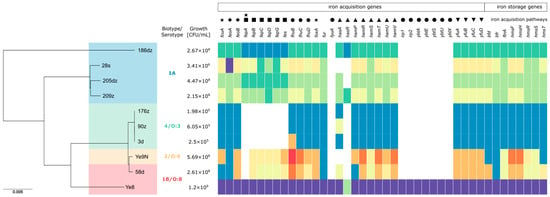
Figure 1
Open AccessArticle
Discovery of Novel Phenolic Compounds from Eutypa lata Through OSMAC Approach: Structural Elucidation and Antibiotic Potential
by
Ana Cotán, Inmaculada Izquierdo-Bueno, Abdellah Ezzanad, Laura Martín, Manuel Delgado, Isidro G. Collado and Cristina Pinedo-Rivilla
Int. J. Mol. Sci. 2025, 26(12), 5774; https://doi.org/10.3390/ijms26125774 - 16 Jun 2025
Abstract
Among grapevine trunk diseases, Eutypa dieback, caused by the fungus Eutypa lata, is one of the most critical ones, due to its widespread infection in vineyards and the lack of effective treatments. This fungus is a vascular pathogen that enters grapevines through
[...] Read more.
Among grapevine trunk diseases, Eutypa dieback, caused by the fungus Eutypa lata, is one of the most critical ones, due to its widespread infection in vineyards and the lack of effective treatments. This fungus is a vascular pathogen that enters grapevines through pruning wounds. The infection process is associated with phytotoxic metabolites produced by the fungus, and as such, the identification of new metabolites from different culture conditions and broths could provide valuable insights into the fungus’s enzymatic system and help its control. For the purposes of this study, the OSMAC (one strain, many compounds) approach was applied to investigate the secondary metabolism of E. lata strain 311 isolated from Vitis vinifera plants in Spain. A total of twenty metabolites were isolated, including five reported for the first time from E. lata and four that are newly identified compounds in the literature: eulatagalactoside A, (R)-2-(4′-hydroxy-3′-methylbut-1′-yn-1′-yl)-4-(hydroxymethyl)phenol, (S)-7-hydroxymethyl-3-methyl-2,3-dihydro-1-benzoxepin-3-ol, and (3aR,4S,5R,7aS)-4,5-dihydroxy-6-((R)-3′-methylbuta-1′,3′-dien-1′-ylidene)hexahydrobenzo[d][1,3]dioxol-2-one. These compounds were extracted from fermentation broths using silica gel column chromatography and high-performance liquid chromatography (HPLC). Their structures were elucidated through extensive 1D and 2D NMR spectroscopy, along with high-resolution electrospray ionization mass spectrometry (HRESIMS). Compounds were evaluated for phytotoxicity against Phaseolus vulgaris, with only eulatagalactoside A producing white spots after 48 h. Additionally, the antibacterial activity against Escherichia coli, Staphylococcus aureus, and Klebsiella pneumoniae of selected compounds was tested. The compounds (R)-2-(4′-hydroxy-3′-methylbut-1′-yn-1′-yl)-4-(hydroxymethyl)phenol and (S)-7-(hydroxymethyl)-3-methyl-2,3-dihydrobenzo[b]oxepin-3-ol showed the most significant antimicrobial activity against Gram-positive bacteria, inhibiting S. aureus by over 75%, with IC50 values of 511.4 µg/mL and 617.9 µg/mL, respectively.
Full article
(This article belongs to the Special Issue Molecular Characterization of Plant-Microbe Interactions)
►▼
Show Figures
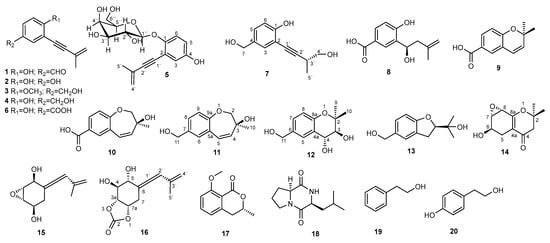
Figure 1
Open AccessReview
Retinal Autophagy for Sustaining Retinal Integrity as a Proof of Concept for Age-Related Macular Degeneration
by
Roberto Pinelli, Gloria Lazzeri, Caterina Berti, Francesca Biagioni, Elena Scaffidi, Michela Ferrucci, Violet Vakunseh Bumah and Francesco Fornai
Int. J. Mol. Sci. 2025, 26(12), 5773; https://doi.org/10.3390/ijms26125773 - 16 Jun 2025
Abstract
Current evidence indicates that most types of autophagy represent a pivot in promoting retinal integrity. In healthy conditions, autophagy acts on multiple pathways, which are fundamental for the biochemistry and the fine structure of the retina. Autophagy is essential in granting visual processes.
[...] Read more.
Current evidence indicates that most types of autophagy represent a pivot in promoting retinal integrity. In healthy conditions, autophagy acts on multiple pathways, which are fundamental for the biochemistry and the fine structure of the retina. Autophagy is essential in granting visual processes. On the other hand, autophagy dysfunction characterizes several retinal disorders. This is mostly evident in age-related macular degeneration (AMD), which represents the most common degenerative disease leading to blindness. The involvement of autophagy in AMD is documented in vitro and in vivo experiments, and it is strongly suggested by clinical findings in humans. The present manuscript provides an overview of the specific types of autophagy, which prevail in the retina and their alterations in retinal degeneration with an emphasis on AMD. The dysfunction of specific autophagy steps was analyzed in relation to hallmarks of AMD pathology and symptoms. An extended session of the manuscript analyzes the connection between altered autophagy and cell pathology within retinal pigment epithelium, as well as the site and structure of extracellular aggregates named drusen. The significance of the drusen in relation to visual function is discussed in the light of the role of autophagy in regulating key steps of phototransduction.
Full article
(This article belongs to the Special Issue New Insights into Autophagy and Retinal Degeneration)
Open AccessArticle
Epitranscriptomics Regulation of CD70, CD80, and TIGIT in Cancer Immunity
by
Christos Panagiotis Rigopoulos, Marios Gkoris, Ilias Georgakopoulos-Soares, Ioannis Boulalas and Apostolos Zaravinos
Int. J. Mol. Sci. 2025, 26(12), 5772; https://doi.org/10.3390/ijms26125772 - 16 Jun 2025
Abstract
Tumor development is mainly marked by the gradual transformation of cells that acquire capacities such as sustained growth signaling, evasion of growth suppression, resistance to cell death, and induction of angiogenesis, achieving replicative immortality and activating invasion and metastasis. How different epigenetic alterations
[...] Read more.
Tumor development is mainly marked by the gradual transformation of cells that acquire capacities such as sustained growth signaling, evasion of growth suppression, resistance to cell death, and induction of angiogenesis, achieving replicative immortality and activating invasion and metastasis. How different epigenetic alterations like m1A, m5C, and m6A contribute to tumor development is a field that still needs to be investigated. The immune modulators, CD70, CD80, and TIGIT, mainly regulate T-cell activation and consequently the immune evasion of tumors. Here, we explored the presence and the potential consequences of RNA modifications in these regulators in pan-cancer. Our findings highlight the critical role of the m6A, m5C, and m1A in regulating CD70, CD80, and TIGIT across multiple solid tumors. By combining epitranscriptomics data with functional enrichment and survival modeling, we show that RNA modification enzymes not only modulate immune-related gene expression but also serve as potential biomarkers for patient prognosis. By constructing a robust four-gene prognostic signature involving YTHDF3, RBM15B, IGF2BP2, and TRMT61A, we demonstrate that RNA modification profiles can accurately stratify patients into risk groups with distinct overall survival outcomes. The performance of this model across eight cancer types underscores the translational promise of epitranscriptomic markers in both mechanistic understanding and personalized oncology. Altogether, our study bridges the gap between the mechanistic regulation of immune checkpoints and their clinical utility, offering novel insights into how the epitranscriptome can be leveraged to improve cancer prognosis and potentially enhance immunotherapeutic strategies.
Full article
(This article belongs to the Special Issue Epigenetic Dysregulation in Cancers: From Mechanism to Therapy)
►▼
Show Figures

Figure 1
Open AccessArticle
Integrated Plasma and Tumor Proteomics of Nasopharyngeal Carcinoma in a Moroccan Cohort
by
Ayman Reffai, Michelle Hori, Ravali Adusumilli, Abel Bermudez, Houssam Haddad, Nezha Tawfiq, Sharon Pitteri, Mohcine Bennani Mechita and Parag Mallick
Int. J. Mol. Sci. 2025, 26(12), 5771; https://doi.org/10.3390/ijms26125771 - 16 Jun 2025
Abstract
Nasopharyngeal carcinoma (NPC) is a multifactorial disease mainly affecting the Southeast Asian and North African populations. Critically, there is a dearth of available circulating biomarkers for NPC. Additionally, as of this writing, there have been no prior plasma proteomics studies on NPC in
[...] Read more.
Nasopharyngeal carcinoma (NPC) is a multifactorial disease mainly affecting the Southeast Asian and North African populations. Critically, there is a dearth of available circulating biomarkers for NPC. Additionally, as of this writing, there have been no prior plasma proteomics studies on NPC in the Moroccan population. Accordingly, there has been no integrated analysis of tumor and plasma for NPC in the Moroccan sub-population. Label-free proteomics analysis was conducted on 25 samples of Moroccan origin (10 NPC samples and 15 healthy control samples). Each sample was depleted of albumin, fractionated into eight fractions, and then analyzed using Liquid Chromatography–Tandem Mass Spectrometry (LC-MS/MS). A total of 291 proteins and 2702 unique peptides were identified across all samples. In total, 16 proteins were differentially expressed (DEPs) between NPC cases and healthy individuals. Of these, three showed prognostic significance, while four demonstrated diagnostic potential. A pathway analysis showed significantly enriched terms related to the immune response and chronic inflammation, revealing acute-phase proteins as differentially expressed. The investigation of patients with early and advanced stages of NPC revealed two DEPs, while four additional DEPs were identified across the three defined clusters of NPC. Across all comparisons, DEPs, such as H2A, IGHG2, SERPINA3, SAA1, CRP, PIGR, and APOA2, have shown potential as biomarkers for NPC, with several being identified for the first time. We additionally compared the plasma proteomic profile of NPC with the tumor proteomic profile, highlighting that deeper proteomics analysis of plasma may be required to quantify additional putative biomarkers that may be shed from the tumor into the blood. Our research presents the first plasma proteomic profile of NPC in Morocco and North Africa, identifying proteins that might ultimately have diagnostic and prognostic potential.
Full article
(This article belongs to the Special Issue Genomics and Proteomics of Cancer)
Open AccessReview
Overview of Cellular Therapeutics Clinical Trials: Advances, Challenges, and Future Directions
by
Meizhai Guo, Bingyi Zheng, Xiaoling Zeng, Xueting Wang and Chi-Meng Tzeng
Int. J. Mol. Sci. 2025, 26(12), 5770; https://doi.org/10.3390/ijms26125770 - 16 Jun 2025
Abstract
Cellular therapeutics, encompassing stem cell-based regeneration and engineered immune cell platforms, have demonstrated efficacy in treating degenerative diseases, immune-related diseases, and oncology. However, low engraftment rates and limited long-term efficacy remain critical translational barriers. This review compiled clinical projects on cell therapy in
[...] Read more.
Cellular therapeutics, encompassing stem cell-based regeneration and engineered immune cell platforms, have demonstrated efficacy in treating degenerative diseases, immune-related diseases, and oncology. However, low engraftment rates and limited long-term efficacy remain critical translational barriers. This review compiled clinical projects on cell therapy in China over the past five years (over 1200 patients across 172 clinical trials) to highlight its rapid development in recent years and illustrate the directions of indications for application. This review also analyzes published clinical achievements all over the world, revealing significant therapeutic improvements in degenerative disorders (40–60% improvement in Western Ontario and McMaster Universities Osteoarthritis Index (WOMAC) scores and oncology (78% ctDNA clearance, p < 0.001)). We propose integrating traditional Chinese medicine (TCM) bioactive compounds to enhance cell viability via C-X-C motif chemokine receptor (CXCR4) upregulation and mitochondrial biogenesis. Despite mechanistic insights, translational barriers include limited TCM validation (72% lacking single-cell omics) and regulatory misalignment. Future efforts should prioritize randomized trials and standardized TCM-cell therapy protocols to bridge discovery and clinical translation.
Full article
(This article belongs to the Section Molecular Pathology, Diagnostics, and Therapeutics)
►▼
Show Figures
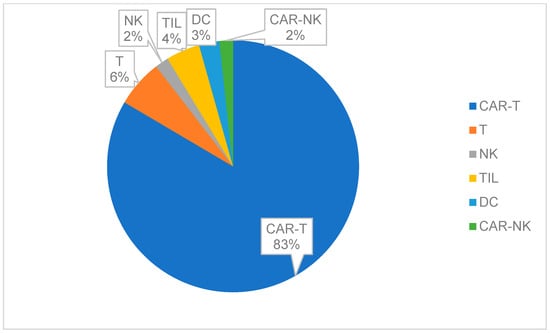
Figure 1
Open AccessArticle
Exploration of Bromodomain Proteins as Drug Targets for Niemann–Pick Type C Disease
by
Martina Parente, Amélie Barthelemy, Claudia Tonini, Sara Caputo, Alessandra Sacchi, Stefano Leone, Marco Segatto, Frank W. Pfrieger and Valentina Pallottini
Int. J. Mol. Sci. 2025, 26(12), 5769; https://doi.org/10.3390/ijms26125769 - 16 Jun 2025
Abstract
Defects in lysosomal cholesterol handling provoke fatal disorders presenting neurovisceral symptoms with variable onset and life spans. A prime example is Niemann–Pick type C disease (NPCD), where cholesterol export from the endosomal–lysosomal system is impaired due to variants of either NPC intracellular cholesterol
[...] Read more.
Defects in lysosomal cholesterol handling provoke fatal disorders presenting neurovisceral symptoms with variable onset and life spans. A prime example is Niemann–Pick type C disease (NPCD), where cholesterol export from the endosomal–lysosomal system is impaired due to variants of either NPC intracellular cholesterol transporter 1 (NPC1) or NPC intracellular cholesterol transporter 2 (NPC2). Therapeutic options for NPCD are limited to palliative care and disease-modifying drugs, and there is a need for new treatments. Here, we explored bromodomain and extra-terminal domain (BET) proteins as new drug targets for NPCD using patient-derived skin fibroblasts. Treatment with JQ1, a prototype BET protein inhibitor, raised the level of NPC1 protein, diminished lysosomal expansion and cholesterol accumulation, and induced extracellular release of lysosomal components in a dose-, time-, and patient-dependent manner. Lastly, JQ1 enhanced and reduced cholesterol accumulation induced by pharmacologic inhibition of NPC1 and of histone deacetylase (HDAC) activity, respectively. Taken together, bromodomain proteins should be further explored as therapeutic drug targets for lysosomal diseases like NPCD, and as new components regulating lysosomal function and cholesterol metabolism.
Full article
(This article belongs to the Section Molecular Endocrinology and Metabolism)
Open AccessArticle
Peptide-Engineered Seliciclib Nanomedicine for Brain-Targeted Delivery and Neuroprotection
by
Guan Zhen He and Wen Jen Lin
Int. J. Mol. Sci. 2025, 26(12), 5768; https://doi.org/10.3390/ijms26125768 - 16 Jun 2025
Abstract
Seliciclib, a cyclin-dependent kinase 5 (CDK5) inhibitor, has demonstrated neuroprotective potential. However, its therapeutic application is limited by poor permeability across the blood–brain barrier (BBB). In this study, polymeric nanoparticles (NPs) modified with a BBB-targeting peptide ligand (His-Ala-Ile-Tyr-Pro-Arg-His) were employed to encapsulate seliciclib.
[...] Read more.
Seliciclib, a cyclin-dependent kinase 5 (CDK5) inhibitor, has demonstrated neuroprotective potential. However, its therapeutic application is limited by poor permeability across the blood–brain barrier (BBB). In this study, polymeric nanoparticles (NPs) modified with a BBB-targeting peptide ligand (His-Ala-Ile-Tyr-Pro-Arg-His) were employed to encapsulate seliciclib. In vitro transport studies showed that the peptide-modified NPs exhibited significantly greater translocation across a bEnd.3 cell monolayer compared to unmodified NPs. Furthermore, in vivo biodistribution analysis revealed that the brain accumulation of peptide-modified NPs was 3.38-fold higher than that of unmodified NPs. Notably, the peptide-conjugated, seliciclib-loaded NPs demonstrated a significant neuroprotective effect against the neurotoxin 1-methyl-4-phenylpyridinium (MPP⁺) in differentiated SH-SY5Y cells.
Full article
(This article belongs to the Special Issue Multifunctional Nanocomposites for Bioapplications)
Open AccessReview
A Comprehensive Review of Phenolic Compounds in Horticultural Plants
by
Lili Xu and Xianpu Wang
Int. J. Mol. Sci. 2025, 26(12), 5767; https://doi.org/10.3390/ijms26125767 - 16 Jun 2025
Abstract
Phenolic compounds (PCs) are key secondary metabolites in horticultural plants that are structurally categorized into flavonoids, simple phenols, stilbenes, and tannins. Synthesized via the shikimate and phenylpropanoid pathways, the metabolism of PCs is regulated by transcription factors (e.g., MYB and bZIP) and influenced
[...] Read more.
Phenolic compounds (PCs) are key secondary metabolites in horticultural plants that are structurally categorized into flavonoids, simple phenols, stilbenes, and tannins. Synthesized via the shikimate and phenylpropanoid pathways, the metabolism of PCs is regulated by transcription factors (e.g., MYB and bZIP) and influenced by genetic backgrounds and environmental stresses (e.g., temperature and UV), thereby leading to species- or tissue-specific distribution patterns. Advanced extraction/separation techniques (e.g., ultrasonic-assisted and HPLC) have enabled systematic PC characterization. Functionally, PCs enhance plant stress resistance (abiotic/biotic) through antioxidant activity, cell wall reinforcement, and defense signaling. Their dual roles as reactive oxygen species scavengers, and signaling molecules are integral. This review synthesizes the classification, metabolic regulation, and biological functions of PCs, providing a scientific basis for improving PC content in horticultural plants with the aim of enhancing stress resilience, postharvest and storage quality, and nutritional value for sustainable agriculture.
Full article
(This article belongs to the Special Issue Molecular Research on Plant Natural Products)
Open AccessReview
Advances in Regenerative Therapies for Inflammatory Arthritis: Exploring the Potential of Mesenchymal Stem Cells and Extracellular Vesicles
by
Timofey O. Klyucherev, Maria A. Peshkova, Maria D. Yurkanova, Nastasia V. Kosheleva, Andrey A. Svistunov, Xing-Jie Liang and Peter S. Timashev
Int. J. Mol. Sci. 2025, 26(12), 5766; https://doi.org/10.3390/ijms26125766 - 16 Jun 2025
Abstract
Inflammatory arthritis, including rheumatoid arthritis (RA) and osteoarthritis (OA), is a group of degenerative joint diseases that result in reduced mobility and a prevalent cause of disability. Despite differing etiologies, both conditions involve inflammation, affecting only the joints in OA and systemic in
[...] Read more.
Inflammatory arthritis, including rheumatoid arthritis (RA) and osteoarthritis (OA), is a group of degenerative joint diseases that result in reduced mobility and a prevalent cause of disability. Despite differing etiologies, both conditions involve inflammation, affecting only the joints in OA and systemic in RA due to its autoimmune nature. Regenerative medicine offers promising alternatives, with a focus on the therapy with mesenchymal stem cell (MSC) and their secreted extracellular vesicles (EVs). MSC-derived EVs have shown great potential in modulating inflammatory pathways and promoting tissue repair in the preclinical models of RA and OA. Additionally, EVs from immune cells exhibit strong anti-inflammatory effects, reducing cartilage and bone degeneration. This review highlights the recent progress in MSC-based and EV-based therapies for OA and RA, discussing the bioengineering approaches that enhance the therapeutic efficacy, stability, and targeting of EV. It also addresses the major challenges in translating EV therapy from the laboratory to clinical practice and discusses strategies to overcome these obstacles in the treatment of inflammatory arthritis.
Full article
(This article belongs to the Special Issue Arthritis: Focus on Pathologies, Symptoms and Therapy)
►▼
Show Figures
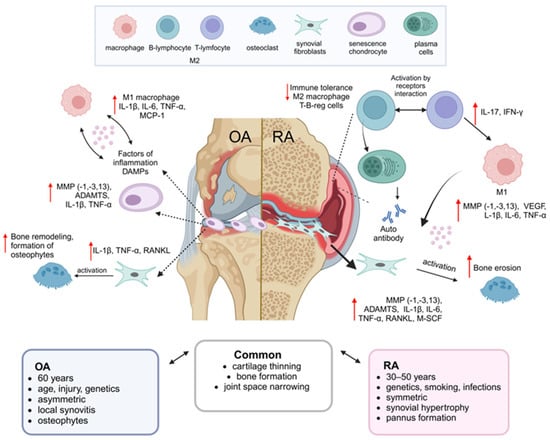
Figure 1
Open AccessArticle
Molecular Insight into the Recognition of DNA by the DndCDE Complex in DNA Phosphorothioation
by
Wencheng Fu, Yuli Wang, Yashi Ge, Haiyan Gao, Xuan Sun, Zixin Deng, Lianrong Wang, Shi Chen, Xinyi He and Geng Wu
Int. J. Mol. Sci. 2025, 26(12), 5765; https://doi.org/10.3390/ijms26125765 - 16 Jun 2025
Abstract
In a vast variety of prokaryotes such as Escherichia coli and Streptomyces lividans, the DNA degradation (Dnd) CDE protein complex (consisting of DndC, DndD, and DndE), together with the DndA/IscS protein and the DndFGH complex, function as a defense barrier to prevent
[...] Read more.
In a vast variety of prokaryotes such as Escherichia coli and Streptomyces lividans, the DNA degradation (Dnd) CDE protein complex (consisting of DndC, DndD, and DndE), together with the DndA/IscS protein and the DndFGH complex, function as a defense barrier to prevent the invasion of non-self-DNA. The DndCDE complex introduces phosphorothioation (PT) modifications into DNA, and the DndFGH complex specifically cleaves non-PT DNA and, thus, restricts horizontal gene transfer and phage invasion. Despite the central importance of the DndCDE complex in DNA PT modification, which catalyzes the oxygen–sulfur swap on DNA, our understanding of this key complex remains poor. Here, we employed protein structure prediction to provide a reasonably reliable prediction of the structure of the DndCDE complex and a 23 bp DNA-DndCDE complex. We found that among the three proteins in the DndCDE complex, DndC, especially its “specificity loop”, plays a key role in recognizing the consensus PT modification sequence. In addition, the DndD protein is found to possess a highly conserved structural surface on its globular domain, presumably mediating the dimerization of DndD as well as the DndCDE complex. Furthermore, our normal mode analysis showed that there exists a dynamic transition between a closed and an open state for the DndCDE complex, facilitating its association and release of DNA. Our conclusions were corroborated by biochemical assays using purified proteins. On the whole, we provide molecular insights into the assembly and DNA-recognition mechanism of a central protein complex involved in DNA phosphorothioation.
Full article
(This article belongs to the Section Molecular Pathology, Diagnostics, and Therapeutics)
►▼
Show Figures
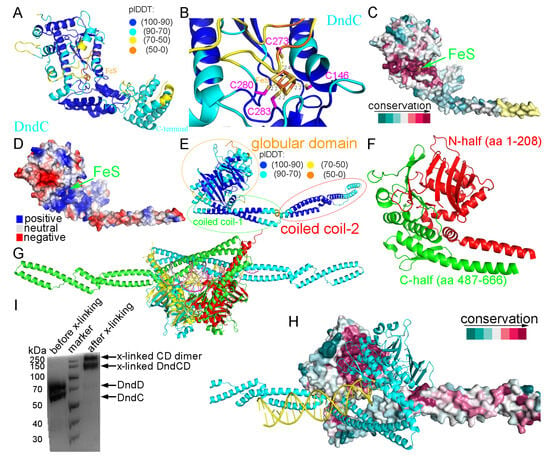
Figure 1
Open AccessArticle
The Originally Established PBE Cell Line as a Reliable In Vitro Model for Investigating SIV Infection and Immunity
by
Xi-Chen Bai, Kohtaro Fukuyama, Leonardo Albarracin, Yoshiya Imamura, Fu Namai, Weichen Gong, Wakako Ikeda-Ohtsubo, Keita Nishiyama, Julio Villena and Haruki Kitazawa
Int. J. Mol. Sci. 2025, 26(12), 5764; https://doi.org/10.3390/ijms26125764 - 16 Jun 2025
Abstract
Previously, we developed a porcine bronchial epithelial cell line designated as PBE cells and demonstrated that this cell line possesses functional Toll-like receptor 3 (TLR3), triggering the expressions of interferons (IFNs), antiviral factors, and inflammatory cytokines after its stimulation with the synthetic double-stranded
[...] Read more.
Previously, we developed a porcine bronchial epithelial cell line designated as PBE cells and demonstrated that this cell line possesses functional Toll-like receptor 3 (TLR3), triggering the expressions of interferons (IFNs), antiviral factors, and inflammatory cytokines after its stimulation with the synthetic double-stranded ARN poly(I:C). In this work, we aimed to further characterize the PBE cell line as a reliable in vitro model for investigating swine influenza virus (SIV) infection and immunity. We evaluated the capacity of two SIV subtypes, H1N1 and H3N2, to replicate and induce cytopathic effects in PBE cells and to modulate the expressions of IFNs, antiviral factors, inflammatory cytokines, and negative regulators of the TLR signaling. We demonstrated that PBE cells are susceptible to both H1N1 and H3N2. SIV infected PBE cells inducing notable cytopathic effects as shown by the alteration of transepithelial electrical resistance (TEER) and cilia. Both SIV subtypes replicated in PBE cells in similar proportion and altered TEER values in comparable magnitudes. However, SIV H3N2 induced higher alterations of cilia than H1N1. SIV infection induced changes in all the immune factors evaluated in PBE cells. We detected quantitative differences when the subtypes H1N1 and H3N2 were compared. The fold expression changes of IFN-β, Mx1, Mx2, IFITM1, OAS1, OAS2, and OASL were higher in PBE cells infected with H3N2 than in cells challenged with H1N1. In addition, although both subtypes stimulated IL-8 expression, only the H3N2 induced IL-6 in infected PBE cells. SIV H1N1 and H3N2 also upregulated the expressions of the negative regulators A20, BCL-3, and MKP-1, while only H1N1 increased SIGIRR and Tollip. Immortalized respiratory cell lines from pigs can be useful in vitro systems for the study of viral infections and immune responses. These studies are of importance in the context of influenza infections not only for the agricultural field because pigs are natural hosts of these viruses but also because these animals serve as intermediate reservoirs of viruses that can threaten humans’ health. We demonstrated here that the PBE cell line can be a useful in vitro model to study SIV infection and immunity.
Full article
(This article belongs to the Section Molecular Immunology)
►▼
Show Figures
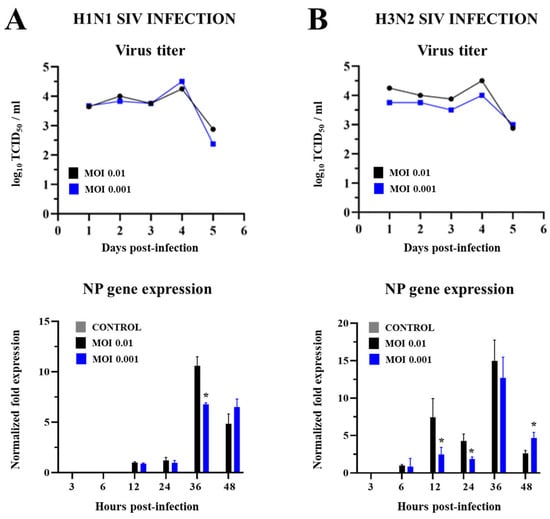
Figure 1
Open AccessArticle
Application of Optical Genome Mapping for the Diagnosis and Risk Stratification of Myeloid and Lymphoid Malignancies
by
Lucía Ballesta-Alcaraz, Mónica Bernal, Jose Ramón Vilchez, Jorge Antonio Palacios, Pilar Jiménez, Pilar Garrido, Juan Francisco Gutiérrez-Bautista and Francisco Ruiz-Cabello
Int. J. Mol. Sci. 2025, 26(12), 5763; https://doi.org/10.3390/ijms26125763 - 16 Jun 2025
Abstract
Optical genome mapping (OGM) is a novel, high-resolution technology for genome-wide detection of structural variants, offering clear advantages over conventional cytogenetics in hematologic malignancies. We applied OGM to a large cohort of patients with acute myeloid leukemia (AML), myelodysplastic syndromes (MDSs), and B-cell
[...] Read more.
Optical genome mapping (OGM) is a novel, high-resolution technology for genome-wide detection of structural variants, offering clear advantages over conventional cytogenetics in hematologic malignancies. We applied OGM to a large cohort of patients with acute myeloid leukemia (AML), myelodysplastic syndromes (MDSs), and B-cell acute lymphoblastic leukemia (B-ALL) to evaluate its clinical utility. In AML and MDS, it revealed high-risk alterations such as deletions in 5q31–5q32 and 7q22, and cryptic fusions like NUP98::NSD1 that were missed by karyotyping or FISH. It also identified chromoanagenesis, a catastrophic chromosomal event linked to poor prognosis and often undetectable by standard methods. In B-ALL, OGM uncovered clinically relevant deletions in CDKN2A/B, PAX5, and IKZF1, as well as high-risk ploidy changes like hypodiploidy and hyperdiploidy, all important for risk assessment and frequently underdetected. OGM not only refines diagnosis and improves risk stratification but can also uncover cryptic and complex genomic abnormalities. Our findings support its integration into routine diagnostics to enhance classification, guide treatment decisions, and improve patient outcomes.
Full article
(This article belongs to the Special Issue Molecular Diagnosis and Treatment of Hematological Malignancies)
►▼
Show Figures

Figure 1

Journal Menu
► ▼ Journal Menu-
- IJMS Home
- Aims & Scope
- Editorial Board
- Reviewer Board
- Topical Advisory Panel
- Instructions for Authors
- Special Issues
- Topics
- Sections & Collections
- Article Processing Charge
- Indexing & Archiving
- Most Cited & Viewed
- Journal Statistics
- Journal History
- Journal Awards
- Society Collaborations
- Conferences
- Editorial Office
Journal Browser
► ▼ Journal Browser-
arrow_forward_ios
Forthcoming issue
arrow_forward_ios Current issue - Vol. 26 (2025)
- Vol. 25 (2024)
- Vol. 24 (2023)
- Vol. 23 (2022)
- Vol. 22 (2021)
- Vol. 21 (2020)
- Vol. 20 (2019)
- Vol. 19 (2018)
- Vol. 18 (2017)
- Vol. 17 (2016)
- Vol. 16 (2015)
- Vol. 15 (2014)
- Vol. 14 (2013)
- Vol. 13 (2012)
- Vol. 12 (2011)
- Vol. 11 (2010)
- Vol. 10 (2009)
- Vol. 9 (2008)
- Vol. 8 (2007)
- Vol. 7 (2006)
- Vol. 6 (2005)
- Vol. 5 (2004)
- Vol. 4 (2003)
- Vol. 3 (2002)
- Vol. 2 (2001)
- Vol. 1 (2000)
Highly Accessed Articles
Latest Books
E-Mail Alert
News
Topics
Topic in
Chemistry, Foods, IJMS, Molecules, Separations
Recent Trends and Advances in Food Authentication and Traceability
Topic Editors: Michael Kontominas, Anastasia BadekaDeadline: 30 June 2025
Topic in
Biomolecules, Energies, Foods, IJMS, Polymers
Microbes and Their Products for Sustainable Human Life
Topic Editors: Shashi Kant Bhatia, Ranjit GuravDeadline: 7 July 2025
Topic in
Biomedicines, Biomolecules, Cancers, Cells, Hematology Reports, IJMS
Advances in Molecular Pathogenesis and Targeted Therapies for Multiple Myeloma
Topic Editors: Chung Hoow Kok, Cindy H. S. Lee, Claudio CerchioneDeadline: 20 July 2025
Topic in
Energies, IJMS, Membranes, Separations, Water
Membrane Separation Technology Research
Topic Editors: Chenxiao Jiang, Zhe Yang, Ying MeiDeadline: 15 September 2025

Conferences
Special Issues
Special Issue in
IJMS
Cognitive Aging: Molecular Perspectives
Guest Editor: Igor Y. IskusnykhDeadline: 20 June 2025
Special Issue in
IJMS
Role of Stem Cells in the Cardiovascular System
Guest Editors: William Chilian, Heather O’LearyDeadline: 20 June 2025
Special Issue in
IJMS
New Insight into Microbial Pathogens in Diseases
Guest Editor: Vanessa SilvaDeadline: 20 June 2025
Special Issue in
IJMS
Chronic Kidney Disease: From Molecular Mechanisms to Therapeutic Approaches
Guest Editor: Ligia PetricaDeadline: 20 June 2025
Topical Collections
Topical Collection in
IJMS
Genetics and Molecular Breeding in Plants
Collection Editor: Pedro Martínez-Gómez
Topical Collection in
IJMS
Feature Papers in Molecular Genetics and Genomics
Collection Editors: Cristoforo Comi, Benoit Gauthier, Dimitrios H. Roukos, Alfredo Fusco










